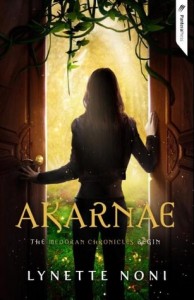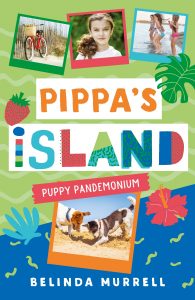Welcome to the first monthly round up for 2020 of the children’s and young adult books read for the Australian Writers Challenge. In the Young Adult category, across all genres, we had eight reviews, and six reviews for children and younger readers. That’s fifteen in total for younger readers – usually, our monthly counts have been double this, so it will be interesting to see where these go in 2020. These books covered all genres, diverse stories and a wide range of well-known authors and series and ones that may not be as well-known.
Akarnae by Lynette Noni continues to be reviewed throughout the years of the challenge, as does her duology, Whisper and Weapon. This month, Brenda reviewed Akarnae and Weapon on Goodreads. One reason I like to try and include these books or highlight their inclusion every so often is that they seem to be reaching a wide and diverse audience, and have given Lynette a significant fan base. The other is that they hold a special place in my heart as a blogger, especially Akarnae as it was the book and indeed the series that got me started in book reviewing during an internship at Pantera Press, and to this day, I still review for them on occasion, with my latest review going up in March in a different genre.
We also often get some interesting reads in the diversity category – I haven’t always included these, in case they get covered in the diversity round up but this review by Shelley Carter at Underground Writers caught my eye this month. I am Change by Suzy Zail is set in Uganda and highlights female empowerment in nations that are less privileged. It discusses poverty and miseducation of girls, and whilst not an #OwnVoices book, Shelley says Suzy Zail has given a voice to those without one, and is a step in the right direction of getting these stories out there, and the next step will be to let women of colour write these stories and give the world #OwnVoices narratives – which are always more effective and the #OwnVoices stories are the ones I would like to seek out and read, as I feel they would be very powerful to experience.
As I am combining Children’s and Young Adult reviews, I will only be highlighting three to four of each every month – and be trying to feature different reviewers each month but I know from last year that quite often, the same reviewers crop up in these categories, so it is at times impossible to include different people every month and some people might appear multiple times. Hopefully by next time I will have worked out how to get my balance right, but until then, here are the children’s book reviews I chose to highlight. It looks like we had a fifty-fifty split in novels and picture books this month in children’s and younger readers, which includes middle grade. Of these six reviews, Amy at Lost in a Good Book contributed four and I, Ashleigh – The Book Muse – contributed two.
Amy read and reviewed Meerkat Choir by Nikki Greenberg and thought it had a wonderful message about inclusion, and how exclusionary behaviour can be detrimental to those taking part in the exclusions. Amy also reviewed Clancy the Quokka by Lili Wilkinson, and this one caught my eye because I think quokkas are a very interesting animal. Amy loved that it was a very Australian story and liked that it showed Clancy as a bit of a villain as well, making it a bit fun for kids.
Finally, the two novels I read and reviewed in January were Pippa’s Island – Puppy Pandemonium by Belinda Murrell– the fifth and hopefully not last in the Pippa’s Island series, although at the same time, it ended well and with a great message to kids.
And the last book I will highlight this month, which may have been picked up in the diversity or historical fiction round-ups, was Dragonfly Song by Wendy Orr (set in the Bronze Age, and explores how deformity and disability were treated badly in some ways, but in other ways, accepted and seen as just part of the person. This was done so subtly, that it was not apparent immediately, but was more apparent upon reflection. It is also diverse in terms of the physical characteristics of the characters who populate the novel.
Well, that’s it for this month – hopefully I will have more to choose from next month, and as I am tracking all of this in a spreadsheet throughout the year, it will be interesting to see where it goes.









